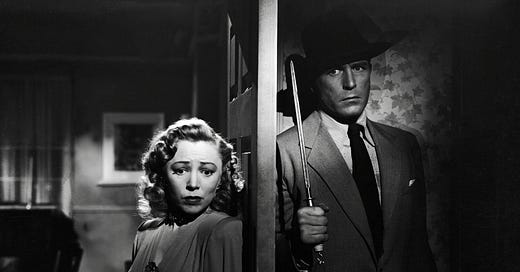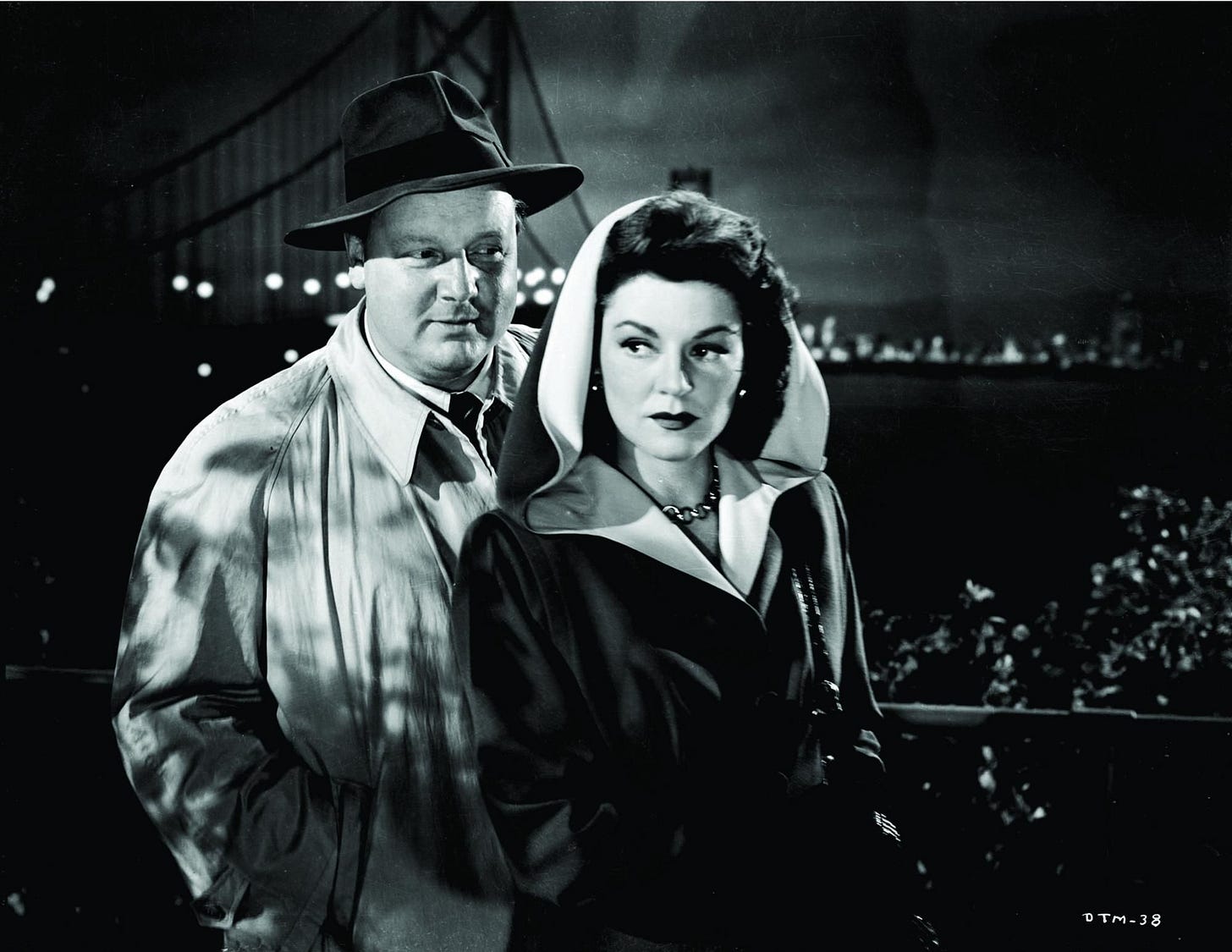The Hardest Noirs series will focus on crime films that are exceptional in their depictions of violence, sex, nihilism, or societies corrupted or in decay.
The Femme Fatale is a staple of Film Noir. Genre classics like Double Indemnity, Out of the Past, Detour, and The Postman Always Rings Twice revolve around sexually charged women who manipulate men into committing crimes that eventually lead to their destruction.
Born to Kill (1947) features one such Femme Fatale – one of the greatest - but in this case, she meets her match in a man who is every bit as driven by dark forces as she is. Born to Kill is unique in that the two man characters are both psychopaths, each scratching and clawing to grab their imagined deserved place at the top.
The movie opens on a conversation between three women: Claire Trevor as Helen Brent, a new divorcee, Isabel Jewell as Laury Palmer, a bit of a floozy, and Esther Howard as Mrs. Kraft, a perpetually soused landlady. The trio discusses the demerits of men – referring to them as ‘turnips’ and agree they all deserve to be manipulated. This sets the tone for the movie and Trevor’s character: dismissal of the proper norms of society in favor of the ruthless pursuit of wealth and power.
Lawrence Tierney plays Sam Wilde, a drifter who early on brutally murders Palmer and the unfortunate turnip she dated to make him jealous. He flees Reno, headed for San Francisco, and meets Trevor on the train on the way. From there, the pair are entangled in a relationship that starts as raw sexual attraction and progresses to hate and murderous rivalry. They both vie to control the large inheritance of Trevor’s step-sister; Tierney goes as far as to marry her. Trevor, seething with resentment, responds by trying to get Tierney charged with the murders, but later resorts to seducing him to break up her step-sister’s marriage.
Tierney was the all-time Hollywood bad boy. After a few electric performances like this one, he tossed his career away in a series of bar fights and drunken assaults. He complained about being typecast as a heavy, but some of those roles closely mirrored his real-life chaos. It’s no stretch to imagine he felt very comfortable playing a character whose violent mood swings throw his life off the rails.
Trevor was one of the best actresses of her time, nominated three times for Academy Awards, winning once for Supporting Actress in Key Largo. She shines here, swinging between icy resolve, panicked despair, and frustrated fury. The scene where she brutally intimidates Howard’s Mrs. Kraft is absolutely chilling.
The wonderful Walter Slezak slinks through the machinations, as a shabby private detective hired by Howard’s sad landlady to solve the murders that took place in her kitchen. He blackmails Trevor, offering to betray his client and drop the investigation in exchange for $15,000. He and Howard, not the authorities, represent whatever meager forces of justice exist in the story. In fact, the police are mere bystanders, only showing up at the fatal final confrontation to clean up the bodies.
In the end, there are no happy endings. The step-sister is left devastated when Trevor demonstrates that Tierney doesn’t love her by seducing him in front of her. The landlady fades away, the murder of her beloved Laury unsolved, The movie closes with Slezak reading the newspaper headlines about the double killings, which he tosses into the trash with a smirk.
Born to Kill exists in a dark universe devoid of empathy or kindness. The few ‘good’ characters are helpless to arrest the swirl of malevolence around them. They seem puzzled by the proceedings, as if they landed in an alternate world filled with evil.
It’s no surprise then, that on its release Born to Kill generated controversy. It was banned outright by the Chicago, Ohio and Memphis Boards of Censors. Born to Kill was included with over two dozen other films by the MPAA in a late 1947* effort to curb ‘gangster pictures.’ Uproar over this film and several others led them to amend the Production Code by adding the following new provisions:
"No picture shall be approved dealing with the life of a notorious criminal of current or recent times which uses the name, nickname, or alias of such notorious criminal in the film, nor shall a picture be approved if based upon the life of such a notorious criminal unless the character shown in the film be punished for crimes shown in the film as committed by him."
And also: "The following shall not be used: titles which are salacious, indecent, obscene, profane or vulgar; titles which suggest or are currently associated in the public mind with material, characters, or occupations unsuitable for the screen; titles which are otherwise objectionable.”
In addition, the MPAA banned these films from re-issue and deleted them from its official title registry. Some of the other movies on the list included: This Gun for Hire and The Killers, both Film Noir classics.
The fact that Hollywood continued to turn out Noirs beyond 1947 was an indication that the power of the Production Code was beginning to wane, however. They certainly failed to stop the production of ‘gangster pictures.’ The 1950s featured such gangland classics as The Big Heat, The Killing, and The Asphalt Jungle. Sleazy, violent Noir classics like Kiss Me Deadly or Pickup on South Street were not greatly impeded by the scorn of the censors or the production code.
Perhaps the best endorsement of Born to Kill came from the New York Times back in the day:
“...this crime-flaunting melodrama from the left hand of RKO is not only morally disgusting but is an offense to a normal intellect—and we say this with no more piety or conceit than is average, we feel sure. In the first place, the story is malignant, being a cheap and unsavory tale of a hard-hearted murderer's fascination for a self-seeking divorcee. And, although such a smeary tabloid fable is hot entirely unfamiliar on the screen, in this particular instance it is of noticeably negative worth. But, more than that, the whole atmosphere and detail of corruption is so indulgently displayed that it looks as though the aim of the producers was to include as much as possible, within the limits of the Production Code.”
*MPA Strengthens Code on Titles And Crime Films", Motion Picture Herald, December 6, 1947





